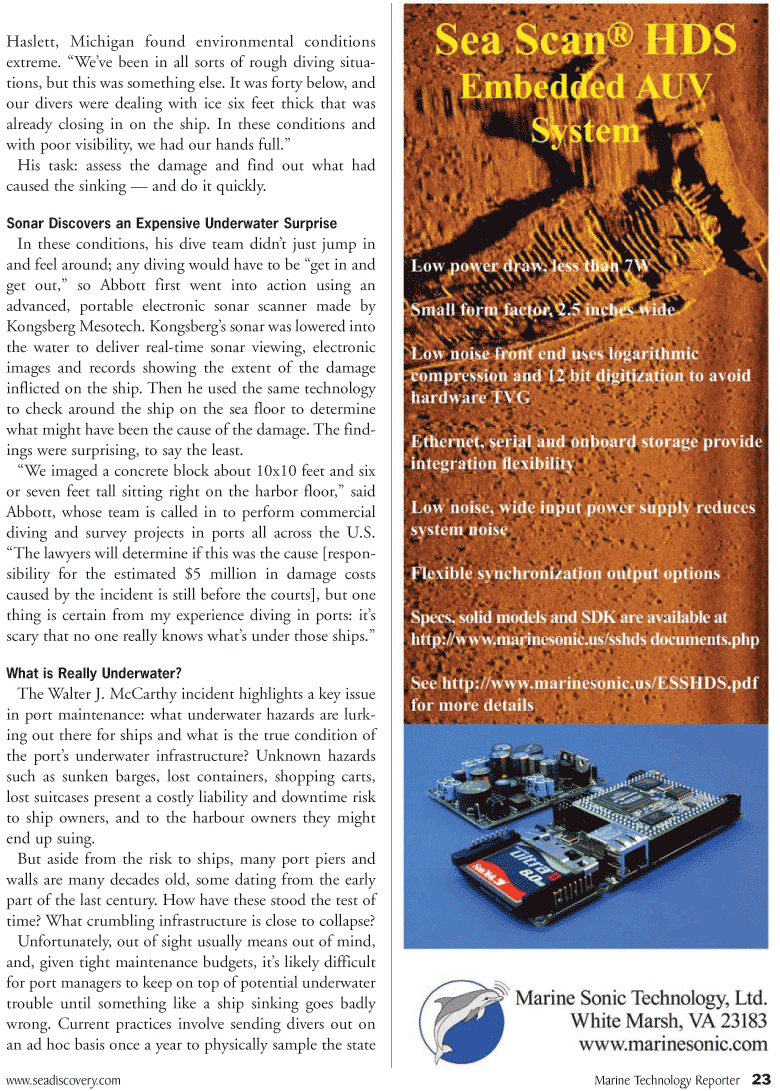
Page 23: of Marine Technology Magazine (September 2010)
Ocean Observation
Read this page in Pdf, Flash or Html5 edition of September 2010 Marine Technology Magazine
Haslett, Michigan found environmental conditions extreme. “We’ve been in all sorts of rough diving situa- tions, but this was something else. It was forty below, and our divers were dealing with ice six feet thick that was already closing in on the ship. In these conditions and with poor visibility, we had our hands full.”
His task: assess the damage and find out what had caused the sinking — and do it quickly.
Sonar Discovers an Expensive Underwater Surprise
In these conditions, his dive team didn’t just jump in and feel around; any diving would have to be “get in and get out,” so Abbott first went into action using an advanced, portable electronic sonar scanner made by
Kongsberg Mesotech. Kongsberg’s sonar was lowered into the water to deliver real-time sonar viewing, electronic images and records showing the extent of the damage inflicted on the ship. Then he used the same technology to check around the ship on the sea floor to determine what might have been the cause of the damage. The find- ings were surprising, to say the least. “We imaged a concrete block about 10x10 feet and six or seven feet tall sitting right on the harbor floor,” said
Abbott, whose team is called in to perform commercial diving and survey projects in ports all across the U.S. “The lawyers will determine if this was the cause [respon- sibility for the estimated $5 million in damage costs caused by the incident is still before the courts], but one thing is certain from my experience diving in ports: it’s scary that no one really knows what’s under those ships.”
What is Really Underwater?
The Walter J. McCarthy incident highlights a key issue in port maintenance: what underwater hazards are lurk- ing out there for ships and what is the true condition of the port’s underwater infrastructure? Unknown hazards such as sunken barges, lost containers, shopping carts, lost suitcases present a costly liability and downtime risk to ship owners, and to the harbour owners they might end up suing.
But aside from the risk to ships, many port piers and walls are many decades old, some dating from the early part of the last century. How have these stood the test of time? What crumbling infrastructure is close to collapse?
Unfortunately, out of sight usually means out of mind, and, given tight maintenance budgets, it’s likely difficult for port managers to keep on top of potential underwater trouble until something like a ship sinking goes badly wrong. Current practices involve sending divers out on an ad hoc basis once a year to physically sample the state www.seadiscovery.com Marine Technology Reporter 23

 22
22

 24
24
